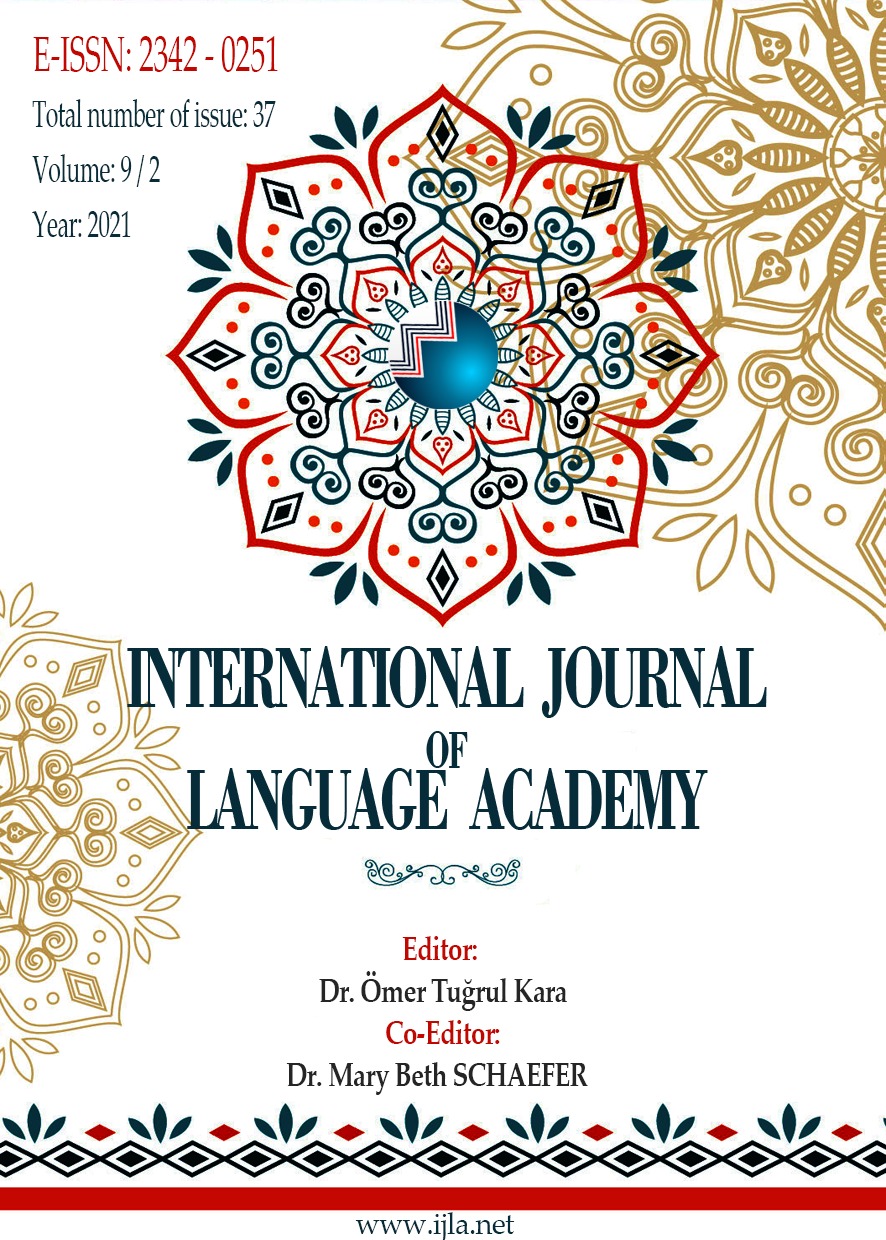TECHNOLOGY ACCEPTANCE MODEL: THE PERCEPTIONS OF TURKISH AND KAZAKH ENGLISH TEACHERS IN ONLINE TEACHING
Author :
Abstract
Nowadays, there is hardly any area that is not affected to some extent by the consequences of the spread of COVID-19, but the largest ever disruption has been to education systems. It has put education institutes in difficult conditions across the globe, forcing educators to adapt to the current events as soon as possible. Consequently, it has triggered a worldwide shift towards online learning. The aim of this research is to find out whether the Technology Acceptance Model (TAM) based on common social psychology theory and the Theory of Reasoned Action (TRA) can be a remedy for the online education. We specifically focused on the perceptions of English language teachers towards the applying of technology in language classes during the pandemic. For this purpose, we compared the apprehension of 15 English teachers in Kazakhstan and 15 in Turkey during the pandemic. Therefore, a questionnaire in the Google form was adapted and sent to the teachers via e-mail. It consists of four sections: perceived usefulness, perceived easy to use, behavioral intention, and system use. The results indicate that the Turkish and Kazakh teachers hold different perceptions about TAM in online teaching. While the majority of Kazakh teachers expressed negative perceptions about technology usage in online teaching, the Turkish teachers believe in its effectiveness and usefulness in online education.
Keywords
Abstract
Nowadays, there is hardly any area that is not affected to some extent by the consequences of the spread of COVID-19, but the largest ever disruption has been to education systems. It has put education institutes in difficult conditions across the globe, forcing educators to adapt to the current events as soon as possible. Consequently, it has triggered a worldwide shift towards online learning. The aim of this research is to find out whether the Technology Acceptance Model (TAM) based on common social psychology theory and the Theory of Reasoned Action (TRA) can be a remedy for the online education. We specifically focused on the perceptions of English language teachers towards the applying of technology in language classes during the pandemic. For this purpose, we compared the apprehension of 15 English teachers in Kazakhstan and 15 in Turkey during the pandemic. Therefore, a questionnaire in the Google form was adapted and sent to the teachers via e-mail. It consists of four sections: perceived usefulness, perceived easy to use, behavioral intention, and system use. The results indicate that the Turkish and Kazakh teachers hold different perceptions about TAM in online teaching. While the majority of Kazakh teachers expressed negative perceptions about technology usage in online teaching, the Turkish teachers believe in its effectiveness and usefulness in online education.
Keywords
- Anderson, T. (Ed.). (2008). Theory and practice of online learning. Edmonton: Athabasca University Press.
- Carliner, S. (2004). Overview of online learning. Amherst, MA: Human Resource Development Press.
- Davis, F. D. (1985). A technology acceptance model for empirically testing new end-user information systems: Theory and results (Unpublished doctoral dissertation), MIT, Massachusetts.
- Davis, F. D. (1989). Perceived usefulness, perceived ease of use, and user acceptance of information technology. MIS quarterly, 13(3), 319-340.
- Fishbein, M., & Ajzen, I. (1975). Belief, attitude, intention and behavior: An introduction to theory and research. Reading, MA: Addison-Wesley.
- Lee, M. K., Cheung, C. M., & Chen, Z. (2005). Acceptance of Internet-based learning
- Nambiar, D. (2020). The impact of online learning during COVID-19: Students’ and teachers’ perspective. The International Journal of Indian Psychology, 8 (2), 783
- Ngai, E. W., Poon, J. K. L., & Chan, Y. H. (2007). Empirical examination of the adoption of WebCT using TAM. Computers & Education, 48 (2), 250-267.
- Ong, C. S., Lai, J. Y., & Wang, Y. S. (2004). Factors affecting engineers’ acceptance of asynchronous e-learning systems in high-tech companies. Information & Management, 41(6), 795-804.
- Orhan, G., & Beyhan, Ö. (2020). Teachers’ perceptions and teaching experiences on distance education through synchronous video conferencing during COVID-19 pandemic. Social Sciences and Education Research Review, 7 (1), 8-44.
- Rahayu, R. P., & Wirza, Y. (2020). Teachers’ perception of online learning during Pandemic Covid-19. Jurnal Penelitian Pendidikan, 20 (3), 392 - 406.
- Restauri, S. L., King, F. L., & Nelson, J. G. (2001). Assessment of students' ratings for two methodologies of teaching via distance learning: An evaluative approach based on accreditation. Jacksonville, AL: ERIC.
- Rosenberg, M. J., & Foshay, R. (2002). E‐learning: Strategies for delivering knowledge in
- Shuey, S. (2002). Assessing online learning in higher education. Journal of Instruction Delivery Systems, 16, 13-18.
- Verma, G., & Priyamyada, M. (2020). COVID-19 and teaching: Perception of school teachers on usage of online teaching tools. Mukt Shabd, 9 (6), 2492-2503.
- Wijekumar, K., Ferguson, L., & Wagoner, D. (2006). Problems with assessment validity and reliability in web-based distance learning environments and solutions. Journal of Educational Multimedia and Hypermedia, 15 (2), 199-215.
- William, R., & Jun, H. (2006). A meta-analysis of the technology acceptance model. Information and Management, 43(6), 740-755.





